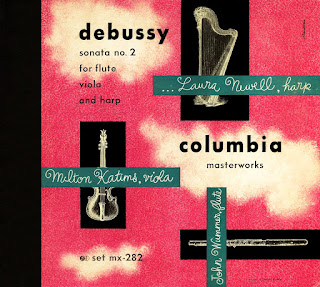 |
| Dimitri Mitropoulos |
Mendelssohn: Symphony No. 3 in A minor, Op. 56 ("Scotch")
Minneapolis Symphony Orchestra conducted by Dimitri Mitropoulos
Recorded December 6, 1941
Columbia Masterworks set MM-540, four 78-rpm records
Link (FLAC file, 86.58 MB)
Link (MP3 file, 39.98 MB)
This recording was made on the Saturday of that fateful weekend when the Japanese attacked Pearl Harbor, drawing the USA into World War II; I'm sorry to say that this pressing was made under wartime conditions with recycled shellac, but I have done what I could with it. Mitropoulos recorded the symphony again twelve years later, with the New York Philharmonic.
 |
| Cover design by Alex Steinweiss (restored by Peter Joelson) |
I was saddened yesterday to hear of the death of Van Cliburn, who had been suffering from bone cancer since last August. His New York Philharmonic debut, in 1954, was under Mitropoulos' direction, and Cliburn is the only person I am aware of to repeat Mitropoulos' feat of simultaneously playing and conducting Prokofiev's Third Piano Concerto - once, at a concert memorializing Mitropoulos!
Cliburn's famous 1958 recording of the Tchaikovsky concerto, incidentally, appears to have been the last extended classical work ever to have been issued in a short-playing format - 3 extended-play 45s (RCA Victor set ERC-2252), with the first movement spread out over four sides just as it was in the days of 78s!




